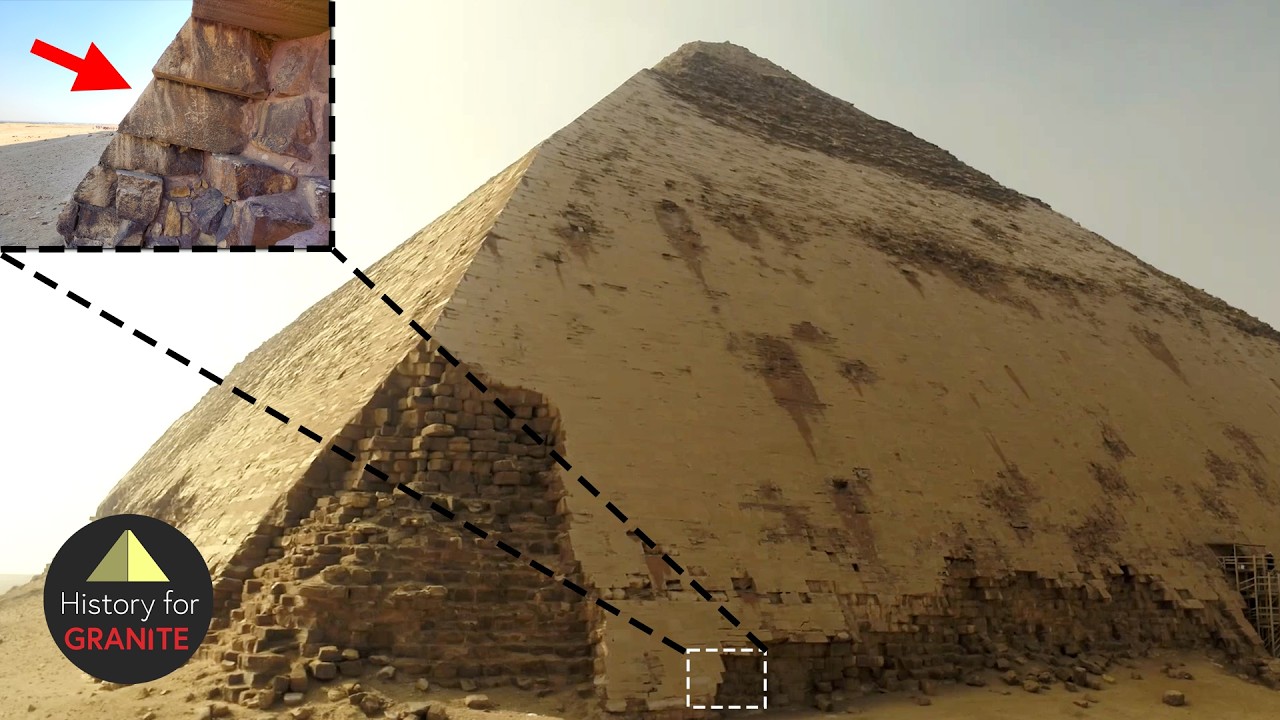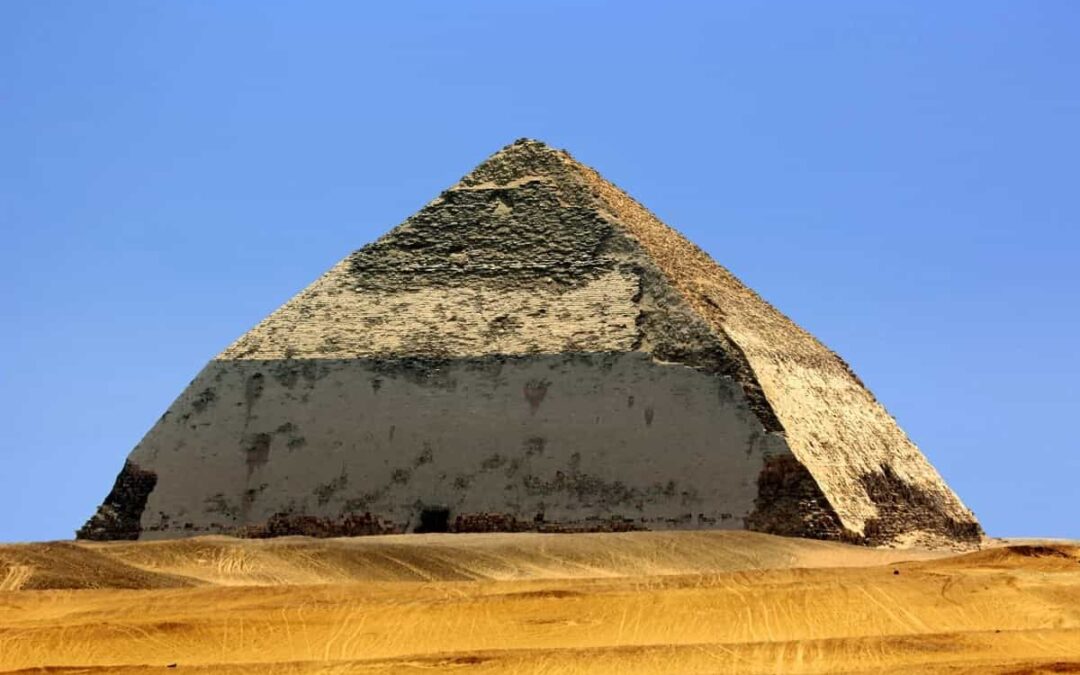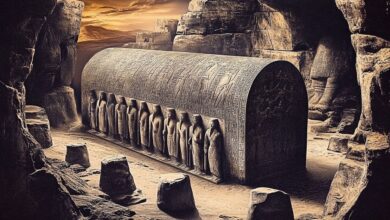Revenge of the Bent Pyramid

Structure and opinions surrounding the Bent Pyramid, a prominent work of the Old Kingdom period of ancient Egypt.
### **1. Historical context and criticisms**
– **The Bent Pyramid** was built under Pharaoh Sneferu, and was the first pyramid to have a smooth surface instead of a stepped one, laying the foundation for later pyramid designs.
– Due to the change in angle at the top, many modern researchers believe that this was a “failure” or “compromise” in construction, for example:
+ **Kenneth Feder** called it a “disaster” due to errors in stone placement.
+ **Chris Naunton** commented that the pyramid did not meet the original design goals.
+ These opinions are often based on the assumption that the change in angle was to relieve pressure when there were signs of cracking or subsidence.
—
### **2. Refutation of Critical Hypotheses**
#### **A. Angular Variation and Aesthetics**
– The 54-degree angle change at the top was not due to the risk of collapse but to create a lighting effect.
– The outer stone blocks were pre-cut to change the angle, proving that this was the design intention from the beginning.
– From the ground, the reflected light makes the stone layers appear straight, although in reality there are small differences.
#### **B. No Evidence of Subsidence or Collapse**
– The hypothesis of the pyramid sinking was put forward by Italian researchers (1964), but:
+ There is no specific evidence of this phenomenon on the four sides of the pyramid.
+ Peter James (an engineer who repaired the pyramids) confirmed that no foundation movement was detected.
– Phenomena such as slight cracks in the corridor or the stone layer shifting only occur locally and may be due to the effects of time.

### **3. Structure and current condition**
#### **A. Interior and exterior**
– The upper chamber of the pyramid is heavily eroded but there are no large cracks that threaten the structure.
– Some blocks are heavily eroded due to the inconsistent quality of limestone and the impact of rainwater.
– Blocks that have been patched or repaired later tend to be more eroded due to water entrapment.
#### **B. Stone layers and “waviness”**
– The stone layers at the upper levels have a difference, creating a “waviness” effect, but this is not a construction error:
+ This phenomenon is also seen in the Red Pyramid and Meidum, showing that this is a common feature in the construction technique of Sneferu’s time.
+ The blocks are mainly offset in the upper part because less attention was paid to aesthetics than in the lower part.
—
### **4. The Patches Controversy**
– The patches on the pyramid are believed to have been used to repair cracks during construction, but:
+ There is no way to determine when these cracks appeared.
+ Many patches may have appeared after the pyramid was completed due to weathering or erosion.
+ The patches are more susceptible to erosion because rainwater is trapped in the gaps.
– The **Bent Pyramid** is not a failure, but an important step forward in ancient Egyptian construction techniques.
– Phenomena such as angle changes, stone layer deviations, and patches reflect advanced construction techniques rather than errors.
– The lighting effects from the white stone shell and new discoveries show that this was a highly aesthetic and scientific design, affirming the position of Pharaoh Sneferu in the history of Egyptian architecture.
The inclined casing stones of the Bent Pyramid allow water to seep through the patches and become trapped between the crust and the patch. As a result, in some areas it is difficult to distinguish between the patches and the original casing stones in eroded sections. However, given their enormous size and the large number of intact areas, the Bent Pyramid remains a comprehensive study.
Patches are generally classified into two main groups: **small and shallow**, usually located at the corners or edges of the casing stones; and **large and deep**, usually square or rectangular, located between the layers and embedded deep into the surface. Large patches sometimes overlap multiple layers, obscuring horizontal planes, and have smaller patches at their edges. In particular, these large patches are often embedded in natural sedimentary layers in limestone, which are not perfectly flat.

The distribution of the large patches shows a **clear pattern**: concentrated in the area between layers 20 and 45 on the pyramid’s faces, away from the corners. This phenomenon can have many causes, such as poor limestone quality during certain construction phases, but is not related to movement or settlement of the structure.
A more likely cause is **thermal expansion**. As temperatures fluctuate day and night, the limestone expands and contracts unevenly, creating outward pressure, especially at the corners of the pyramid. This causes the casing panels to push out and deteriorate gradually over time, over centuries or millennia, rather than appearing suddenly during construction.
A 2014 lidar survey revealed that the Bent Pyramid bulges in the middle of each face, coinciding with the location of the large patches. This confirms that the patches are not the result of structural instability, but rather a maintenance effort, intended to maintain a perfectly reflective surface for the sun over the centuries. In fact, the patches prove the Bent Pyramid’s success, rather than its failure as some have previously suggested.
Finally, comparing the Bent Pyramid to the Red Pyramid based on design and surface structure remains controversial. Aspects such as the tilt of the casing stones or the angle of the capstone are not enough to conclude that the Red Pyramid is an “evolution” of the Bent Pyramid. In fact, the evidence suggests that the pyramids may have been built simultaneously, rather than sequentially as many have previously suggested.








